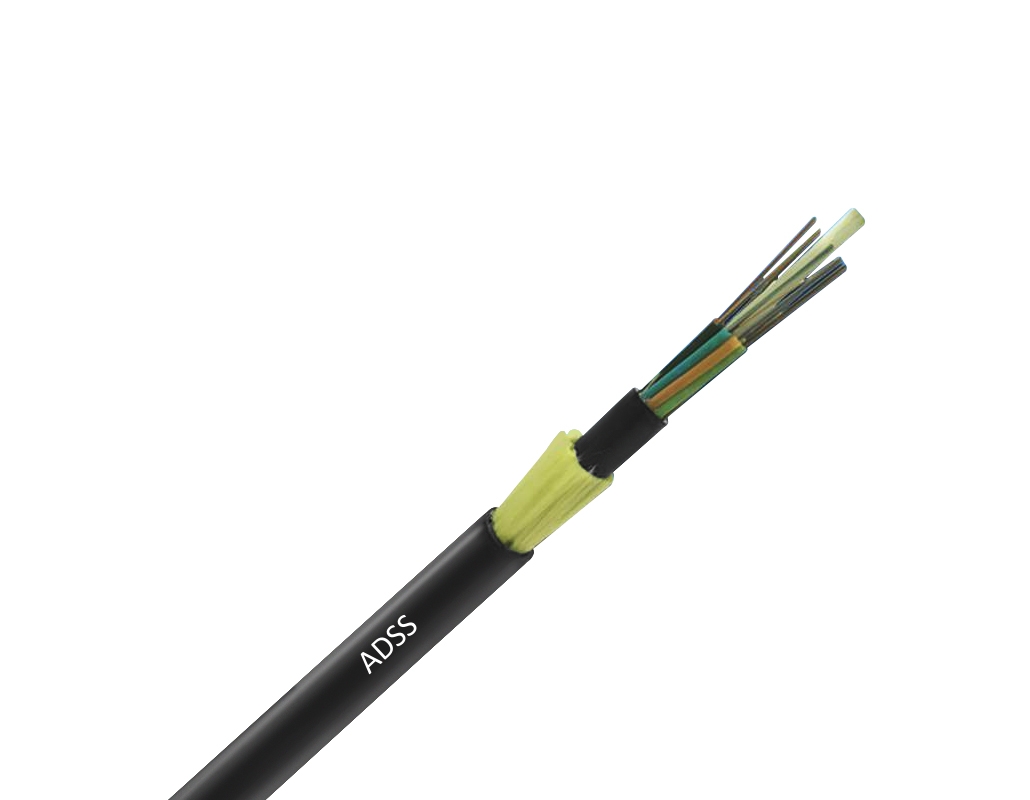ADSS cables (All Dielectric Self-Supporting), also called all-dielectric self-supporting optical cables, are made from dielectric materials without any metallic components. They are composed of a bundle of optical fibers wound around a central reinforcing core, protected by insulation, a water-repellent coating, a reinforcement and a sheath. Self-supporting means the cable can support its own weight as well as external loads. These cables are mainly used in high voltage overhead electrical transmission systems and have features such as no metal, tensile strength, self-support, high insulation, an absence of induction, a thin waist, a lightness, ease of installation and economy.
Main structures
Currently, the structure of ADSS cables is divided into two categories : rolled strand cables and central beam tubes.
Loose wrap twist structure
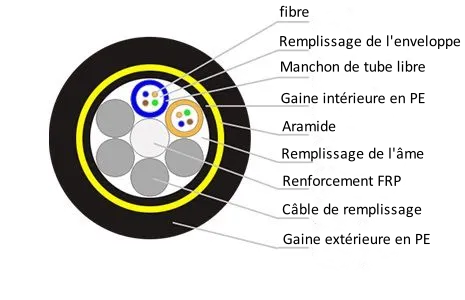
ADSS cables use a loose wrap twist structure, where 250µm optical fibers are inserted into a loose casing tube made from high modulus materials, filled with a water-repellent compound. This loose envelope tube (and filling rope) is twisted around a non-metallic central reinforcement (usually made of glass fiber reinforced plastic), forming a compact cable core with gaps filled with water-repellent grease. An interior polyethylene liner (PE) is then extruded onto the cable core, followed by an aramid reinforcement twist, then an exterior polyethylene covering (PE) or by resisting electrical traces (AT). This structure allows full twisting of the loose casing tube, central reinforcement and filling grease, ensuring both the sealing of the optical cable and offering various measures of resistance to lateral compression as required.
Central tube structure
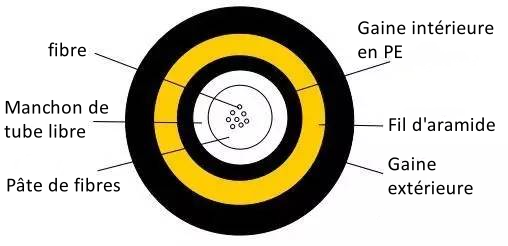
In this ADSS cable structure, optical fibers are placed with excess length in a PBT tube filled with water-repellent grease, then wrapped with appropriate aramid reinforcing yarns based on the required tensile strength. Ensuite, a polyethylene covering (PE) (for electric fields ≤ 110 kV) or by resisting electrical traces (AT) (for electric fields ≥ 100 kV) is extruded. In ADSS cable structure with central tube, all optical fibers are placed inside the central tube, with aramid reinforcing threads twisted around the central tube to support mechanical resistance.
Comparison of two types of ADSS cables
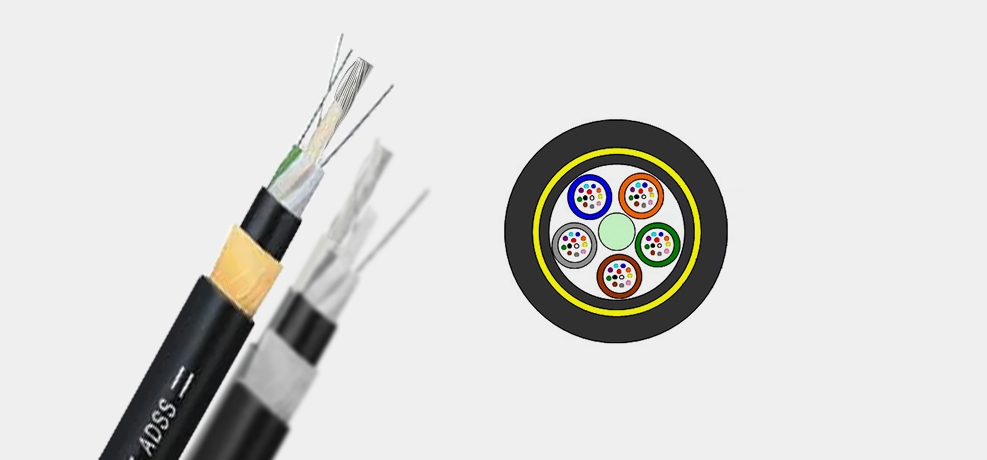
Electrical characteristics : For operational environments where induced field strength exceeds 12kV/m, the outer sheath of both ADSS cables must be black polyethylene resistant to electrical traces.
Structural features : Compared to Loose Wrap Twist ADSS Cable, Center tube ADSS cable only uses aramid as the optical cable load carrier. Under identical voltage conditions, center tube ADSS cable may have smaller cross section, lighter weight and less influence on post tension. Center tube ADSS cable has good waterproof performance, a lower price and is easy to install. On the other hand, the laying method of ADSS cable with loose wrap twists is more varied, suitable for various situations such as overhead lines, direct burial, conduits and underwater applications, with better control of excess length and a greater number of fibers. In comparison, loosely wrapped twisted ADSS cables are more common and widely used, but also more expensive.
Difference between AT and PE in ADSS cables
AT and PE in ADSS cables refer to the protective jacket of the cable. PE chickens : Standard polyethylene jacket used for power lines of 10 kV etc 35 kV. Gaine AT : Anti-electrical trace sheath used for electrical lines of 110 kV etc 220 kV.
Benefits
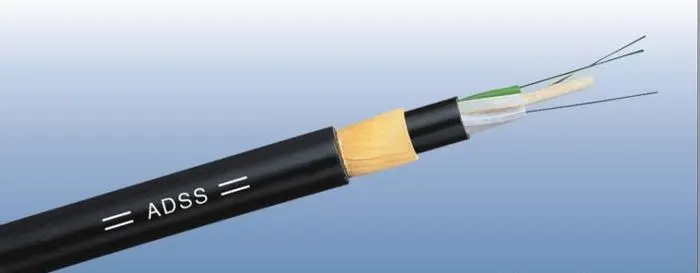
- Ability to withstand extreme weather conditions (strong winds, hail, etc.) is strong.
- Strong adaptability to temperatures, low linear expansion coefficient, meeting the requirements of hostile environments.
- ADSS fiber optic cable is small in diameter and low in weight. This design reduces the impact of ice and high winds on fiber optic cables, as well as the load on the electricity pylons. This structure optimizes the use of tower resources.
- ADSS cables can be installed independently of power lines or bottom cables, and can be installed on pylons without power interruption.
- Fiber optic cable ADSS exhibits superior performance. It is free from electromagnetic interference, even when used in high intensity electric fields.
- Independent of power lines, facilitating maintenance.
- Being a self-supporting cable, there is no need to use suspension lines or other accessories during installation.
- ADSS fiber optic cable is a type of all-dielectric structure fiber optic cable. It is characterized by its respect for the environment and its energy savings. It does not contain metallic materials, which reduces dependence on limited resources. It reduces carbon emissions.
Application principale
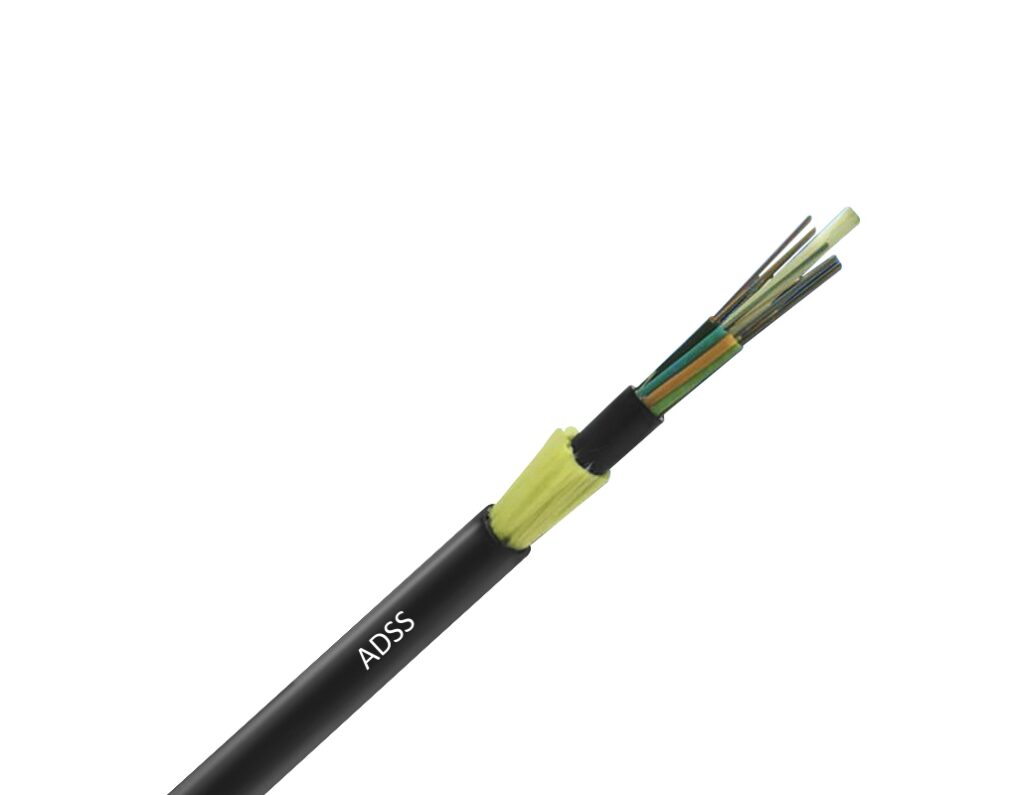
- Use of optical cables as input and output cables for relay stations in OPGW systems. Due to its security properties, it can effectively solve electrical insulation problems when entering and exiting relay stations.
- Use of optical cables as transmission cables in fiber optic communication systems of power networks haute tension (110 kV – 220 kV). Especially, it is very convenient for many places when renovating old communication lines.
- Use of fiber optic communication systems in electrical distribution networks of 6 kV to 35 kV to 180 kV.
In summary, ADSS cables are mainly used in high voltage overhead transmission systems. They can also be used in areas with high electrical activity, wide spacing and other overhead communication line laying environments.
As an innovative fiber optic cable technology, ADSS cable has wide applicability. With the rapid development of 5G and IoT technology, demand for high bandwidth and low latency will further increase, and ADSS optical cable will play an even more important role. In the future, ADSS optical fiber cables will have broad development prospects.
ADSS fiber optic cables produced by ZMS are suitable for a wide variety of communication network construction projects. They have many advantages, such as great strength, light weight, weather resistance, protection against electromagnetic interference, security and reliability, flexibility and possibility of customization. Furthermore, ZMS is able to provide a variety of customized ADSS cables according to customer needs. ZMS can produce ADSS cables of different lengths, structures and properties to meet the needs of different projects. If you need ADSS cables, you can contact us via the email address info@zmscable.fr.

